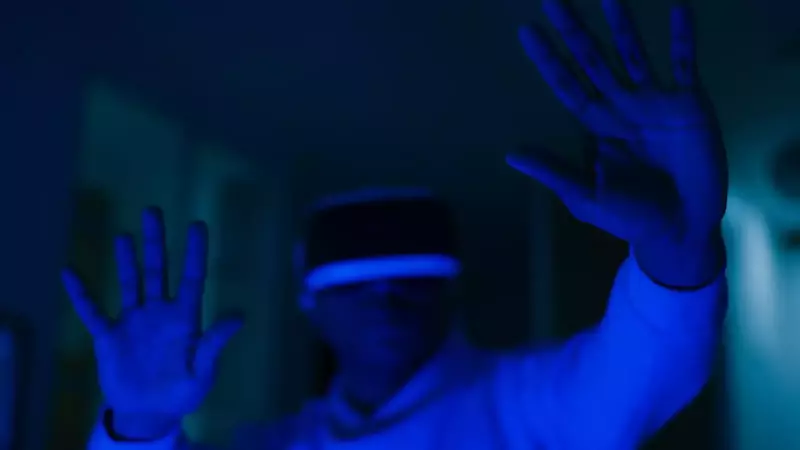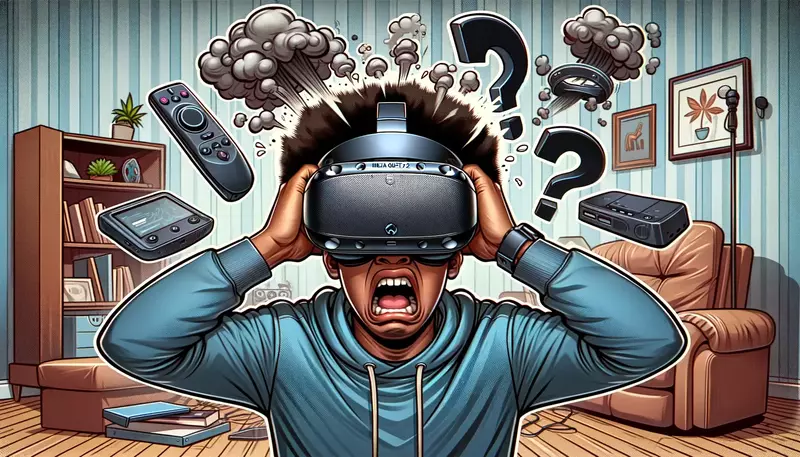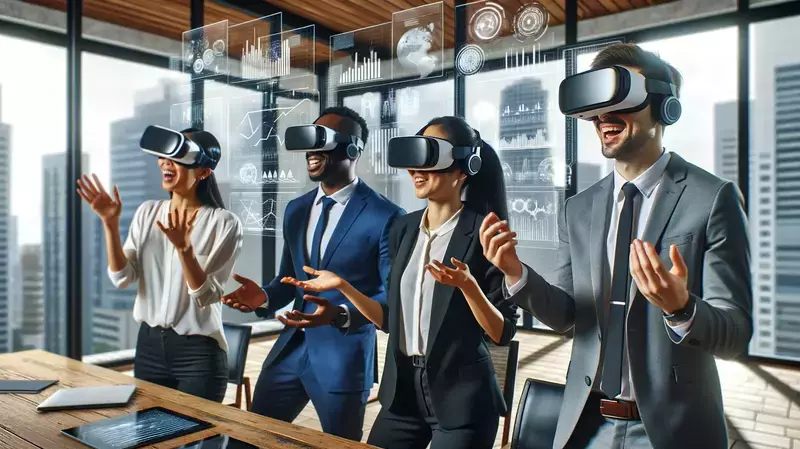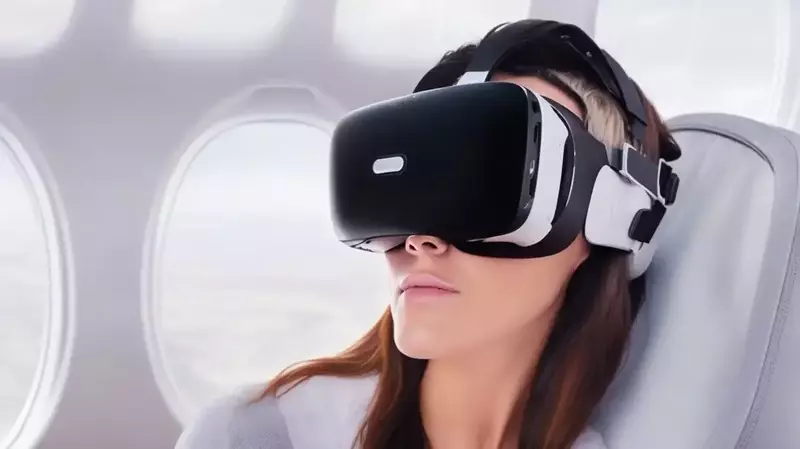This site contains affiliate links to products, and we may receive a commission for purchases made through these links.
Epilepsy is a neurological disorder that affects people of all ages. For some, epilepsy can be controlled with medication. But for others, seizures can happen even if they are taking their medication. You may ask yourself, “Is Virtual Reality safe for Epilepsy?”
No, it is not safe for epilepsy. This is mainly because VR affects epilepsy a great deal. In virtual reality, 100% of the display represents 100% of your view. You have gadgets strapped to your face and a wire hanging around your neck, which are certainly not ideal conditions for a complete tonic-clonic seizure.
This article will explain VR’s effects on epilepsy. I will also give answers to some of the most frequently asked questions about VR and epilepsy.

Virtual Reality and Epilepsy
Virtual Reality (VR) is a computer-generated experience. It stimulates many senses and gives the impression that you are truly experiencing what the computer is producing.
It has been used for training for a long time (for example, pilots and surgeons), and it is growing more popular.
So, how may virtual reality affect persons who suffer from photosensitive epilepsy?
VR pictures flash extremely rapidly, which is usually too fast for persons with photosensitive epilepsy to have a seizure. On the other hand, the field of vision is wide; thus, more of the eye is activated.
This suggests that a larger portion of the brain may be impacted, which might result in a photosensitive seizure. Virtual reality differs from the experience you would have when watching television and the potential danger should not be underestimated.
Head-mounted displays (HMDs) for virtual reality (VR) record the whole field of vision of the user. The consequence of this is that there is no turning away if a certain sequence of lights begins to flash.
READ MORE! Can You Enter Virtual Reality Without A Headset? (Solved!)
What Can Cause a Seizure In VR?
Individuals with “photosensitive epilepsy” are those who are provoked by “flashing lights.” Gamma oscillations, a repeated pattern of neuronal activity in the brain, are the cause of this.
When viewers are exposed to particular black and white bar patterns, they tend to appear.
While most VR apps do not contain continuous strings of flashing light patterns, most VR companies advise against using VR if the user has epilepsy or is sensitive to quickly changing light.
Common causes of seizures for a person suffering from photosensitive epilepsy include;
- The light is flashing.
- Patterns that are bright and striking, such as white bars on a black backdrop, are popular.
- After a flashing white light, there is complete darkness.
- Intense visual stimuli that fill up your whole field of view, such as being very near to a television screen
- Colors such as red and blue, among others
Why Does VR Trigger Seizures?
VR can cause seizures because of the following reasons:
Photosensitivity; Seizures that are photosensitive affect between 3% and 5% of patients who have epilepsy. When flashing lights or strong contrasting patterns produce their seizures, this is the case. Many VR games have similar features, which might cause seizures.
Stress and excitement; It is possible to have seizures when playing virtual reality games that are frightening, distressing, or frustrating, or that overexcite the user in any other manner.
Fatigue; Virtual reality games can be a little addictive, and it’s easy to lose track of time while playing them for hours on end. In the case of epilepsy, it is critical to prevent being overtired since this is a well-known seizure trigger that must be avoided.
Loud music or noise; Seizures in certain persons are provoked by certain noises, such as repetitive music. This kind of repetitive music may be found in a lot of VR games.
Safety Measures for People with Epilepsy When Using VR
When exposed to specific lights, patterns, or visuals seen in video or computer games, a minor percentage of people may develop seizures. Even if there is no history of epilepsy or seizures, this may happen.
When playing a videogame or using a virtual reality headset, certain people may experience symptoms such as:
- Epileptic seizures
- Loss of consciousness
- Involuntary movement or convulsion
- Blurred or vision that is altered
- Dizziness, motion sickness, nausea, or disorientation
- Repetitive motion injuries and eye strain, eye or muscle twitches.
Before playing any VR game, please read and observe any safety and health instructions your virtual reality headset manufacturer provides.
Failure to read and follow the health and safety precautions stated in this notice and the precautions provided by the manufacturer may result in property damage, death, or personal injury.
I recommend taking 10-to-15-minute breaks from games and that you should not play for long periods or when you are sleepy, tired, or weary.
READ MORE! How Long Can You Play In VR Per Session? (Solved!)
Are Seizures Caused by VR Dangerous?
People who continue to experience seizures are more exposed to the hazards of the seizures, particularly if they happen unexpectedly and impair awareness.
Epilepsy, like many other long-term illnesses like asthma or diabetes, has certain dangers. If left untreated, problems may quickly escalate.
When persons have poorly managed seizures, their risks related to the seizures are increased. The first step in decreasing these hazards is to have a good seizure management strategy.
Seizures may contribute to or cause injuries or falls. The effects can also be more severe, contributing to or causing death. Seizures come in different forms; each has its own set of risks.
You should perform the following first aid measures for anyone with epilepsy who is experiencing a seizure:
- Maintain your calm and stay with the individual.
- Roll the individual to the side if he/she has liquid or any food in their mouth.
- Protect them from any harm or dangerous objects and keep them safe.
- Ensure there is something soft under their chin and also adjust tight clothes.
- Keep reassuring the individual until he/she fully recovers
- Time the duration the seizure takes if you can
- After the jerking stops, gently turn the victim onto their side.
Final Thoughts
It is not safe for someone with epilepsy to use VR products. VR can lead to seizures, especially for those suffering from photosensitive epilepsy.
I hope this article helps you know how VR affects epilepsy and the steps you can take to help someone suffering from a seizure while using VR products.

Espen
Espen is the Director of PursuitMeta and has written extensively about Virtual Reality and VR Headsets for years. He is a consumer product expert and has personally tested VR Headsets for the last decade.




Leave a Reply